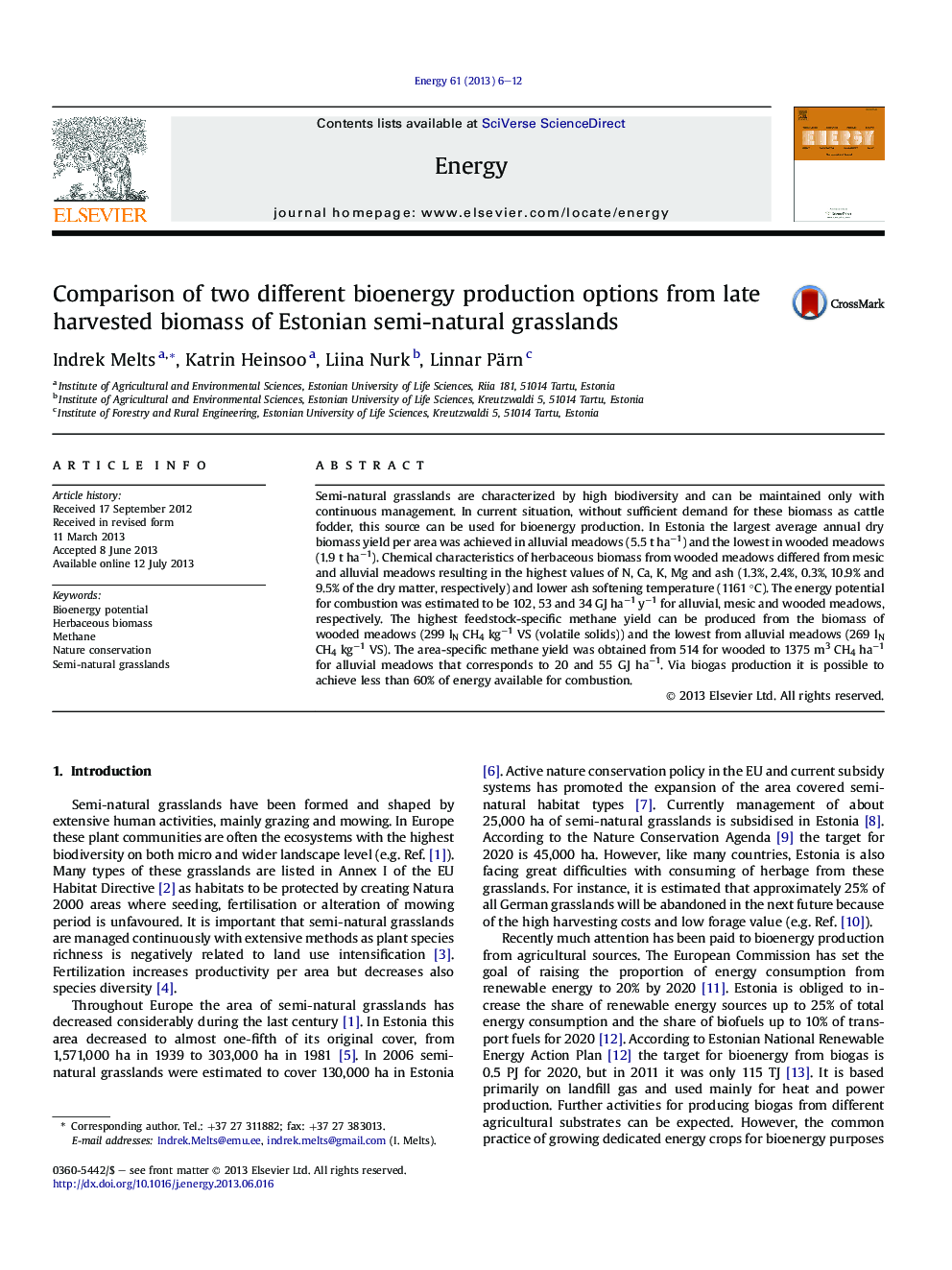| کد مقاله | کد نشریه | سال انتشار | مقاله انگلیسی | نسخه تمام متن |
|---|---|---|---|---|
| 8079033 | 1521485 | 2013 | 7 صفحه PDF | دانلود رایگان |
عنوان انگلیسی مقاله ISI
Comparison of two different bioenergy production options from late harvested biomass of Estonian semi-natural grasslands
ترجمه فارسی عنوان
مقایسه دو نوع مختلف تولید انرژی زیست محیطی از زیست توده نیمه زراعی نیمه طبیعی استون
دانلود مقاله + سفارش ترجمه
دانلود مقاله ISI انگلیسی
رایگان برای ایرانیان
کلمات کلیدی
پتانسیل بیو انرژی، زیست توده علفی، متان، حفاظت از طبیعت، چمنزارهای نیمه طبیعی،
موضوعات مرتبط
مهندسی و علوم پایه
مهندسی انرژی
انرژی (عمومی)
چکیده انگلیسی
Semi-natural grasslands are characterized by high biodiversity and can be maintained only with continuous management. In current situation, without sufficient demand for these biomass as cattle fodder, this source can be used for bioenergy production. In Estonia the largest average annual dry biomass yield per area was achieved in alluvial meadows (5.5 t haâ1) and the lowest in wooded meadows (1.9 t haâ1). Chemical characteristics of herbaceous biomass from wooded meadows differed from mesic and alluvial meadows resulting in the highest values of N, Ca, K, Mg and ash (1.3%, 2.4%, 0.3%, 10.9% and 9.5% of the dry matter, respectively) and lower ash softening temperature (1161 °C). The energy potential for combustion was estimated to be 102, 53 and 34 GJ haâ1 yâ1 for alluvial, mesic and wooded meadows, respectively. The highest feedstock-specific methane yield can be produced from the biomass of wooded meadows (299 lN CH4 kgâ1 VS (volatile solids)) and the lowest from alluvial meadows (269 lN CH4 kgâ1 VS). The area-specific methane yield was obtained from 514 for wooded to 1375 m3 CH4 haâ1 for alluvial meadows that corresponds to 20 and 55 GJ haâ1. Via biogas production it is possible to achieve less than 60% of energy available for combustion.
ناشر
Database: Elsevier - ScienceDirect (ساینس دایرکت)
Journal: Energy - Volume 61, 1 November 2013, Pages 6-12
Journal: Energy - Volume 61, 1 November 2013, Pages 6-12
نویسندگان
Indrek Melts, Katrin Heinsoo, Liina Nurk, Linnar Pärn,
